|
|
|
Jean Noblet tarot - a Paris made ‘Marseille’-type deck from 1650
¶432 Every sign by itself seems dead. What gives it life? – In use it is alive.
Is life breathed into it there? – Or is the use its life?
Ludwig Wittgenstein Philosophical Investigations
I shall justify neither my Hebrew letter correlations, nor my notes. I provide both in part as a work in progress, with my preferred connections shown. If (and it is a big 'if') there was any connection between trump development and Hebrew letters then, I suspect, it would more likely have taken the form of an abecederium as mentioned by Mark Filipas with, I would suggest, an ordinal reflection between both card and letter - which is what I present below.
For greater detail on the cards' imagery, please consult one of my books... especially Reading the Marseille Tarot.
Card images
from the 1650 Parisian
Jean Noblet |
Ordinal value
Hebrew letter
Cardinal value |
|
Notes
Below are minor notes only - more detailed explanation will be found in my book Reading the Marseille Tarot. |
| | | |
|
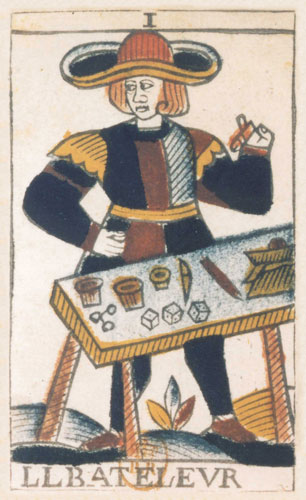 |
1st


Alef
1
|
|
I - Bateleur
A rascal by any other name - yet what an entertainer! One of the principal activities under the direction of the Moon, his mastery of illusion also engages the participant to cast his or her attention away from that which may be of central importance. Prestidigitation at its best!
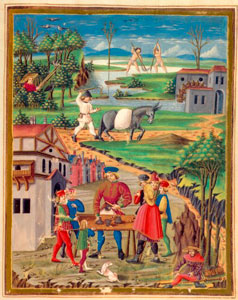
|
| | | |
|
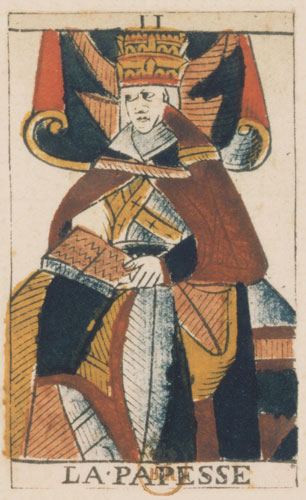 |
2nd


Bet
2
|
|
II - Papess
Reminiscent of scenes of Mary at the Annunciation (and triple-crowned as Queen of Heaven), and reflective of the Lectio Divina practiced across Europe as sacred reading and imaginative entering of the scenes brought to mind by the text. At her foot appears a spinning wheel, as also here with book as well:
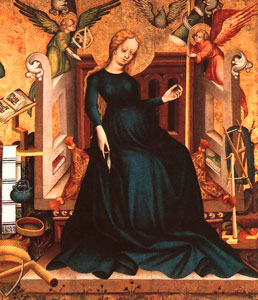 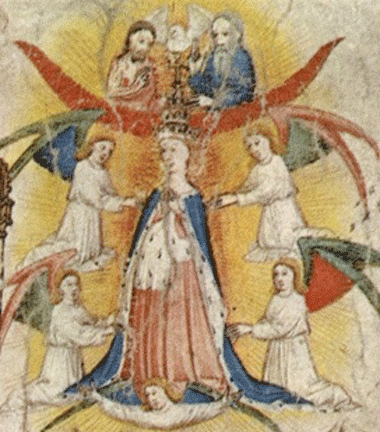
|
| | | |
|
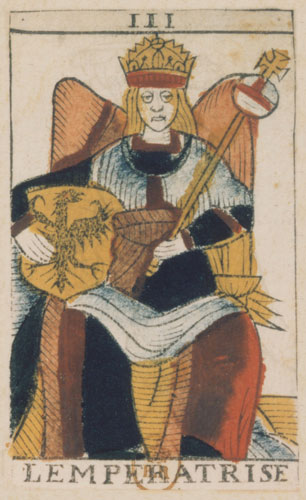 |
3rd


Gimel
3
|
|
III - Empress
The Empress, Isabella of Portugal, representing the breadth of Europa and calling to mind the immortal imagery and power of Isis and Harpocrates and thence the Madonna and Child.
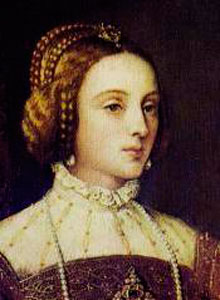  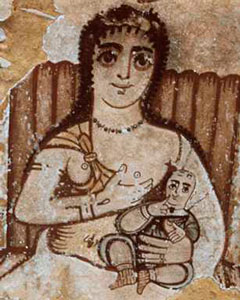
|
| | | |
|
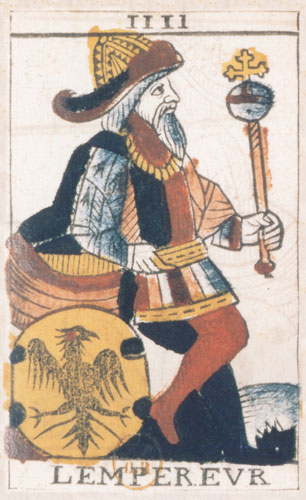 |
4th


Dalet
4
|
|
IIII - Emperor
Charles V, Holy Roman Emperor, member of the Order of the Golden Fleece.
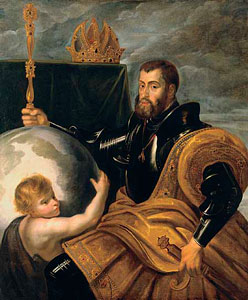
|
| | | |
|
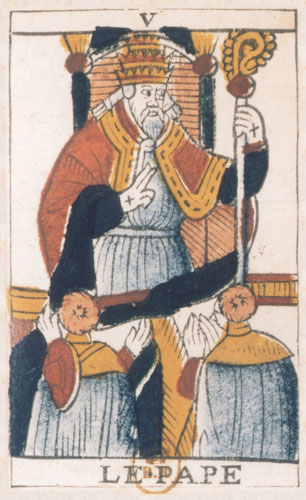 |
5th


Heh
5
|
|
V - the Pope
Podium, rather than throne, is here likely depicted. Yet in this image is also a semblance of depictions of God as bringing forth both the Torah and the Gospels (or rather, the Old and New Covenants), as, respectively, the Jewish and Christian complementary spiritual impulses.
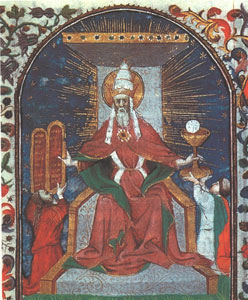
|
| | | |
|
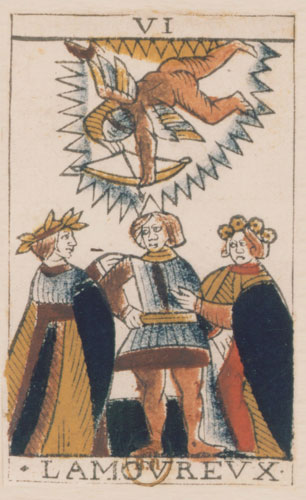 |
6th


Vav
6
|
|
VI - L'Amoureux
Marriage has both an earthly and divine aspect. Its earthly part seeing the social fabric weaved in a manner that sees the joining of two individuals towards a new family unit, and the divine as that opening of the power of Love, that greatest of Virtue, according to the writings of St Paul.
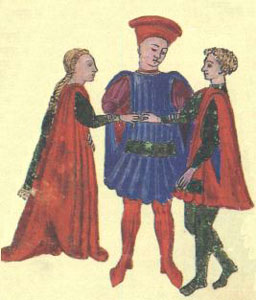
|
| | | |
|
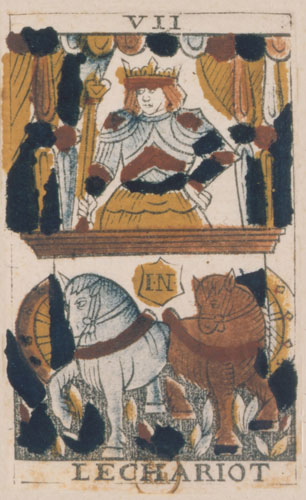 |
7th


Zain
7
|
|
VII - the Chariot
Plato, in the Phædrus, uses the metaphor of the three parts of the Soul as Charioteer whose chariot is drawn by two horses, the one on the right comely and white, the one on the left malformed and disobedient. I'm allowed one of my own images, I trust!
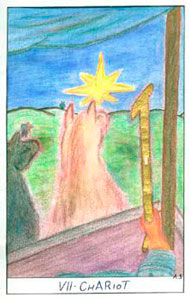
|
| | | |
|
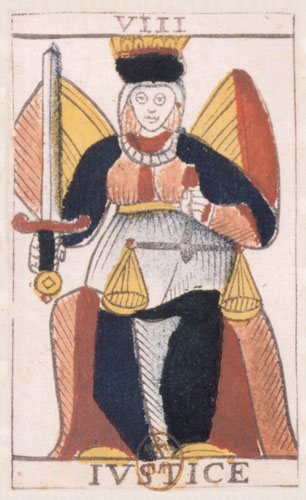 |
8th


Heth
8
|
|
VIII - Justice
Justitia as derivative of Themis and Dike, reflecting an Aristotelean view of the concept.

True Justice cannot be veiled |
| | | |
|
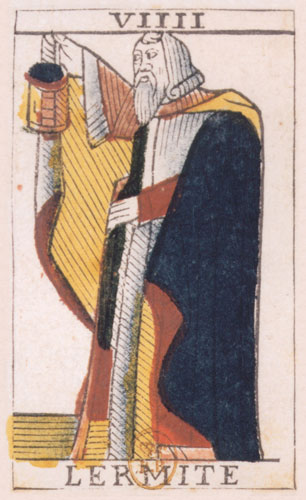 |
9th


Tet
9
|
|
VIIII - Hermit
Though an aspect of Diogenes is well brought to mind, it is St Antony that brings to light the eremetic impulse and its living qualities.
.jpg)
'The day we prepare for the best present for Truth, the sun will no longer set, it will begin to shine forever' Peter Deunov |
| | | |
|
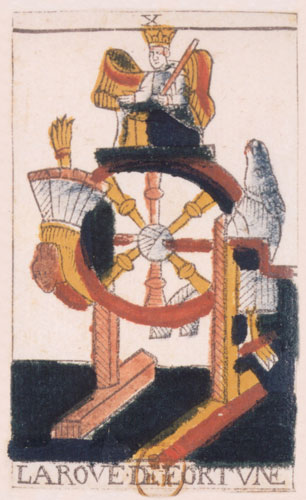 |
10th


Yod
10
|
|
X - Wheel of Fortune
From Boethius's Consolation of Philosophy, both the image and its popular transformation into the Ferris Wheel take their foundation. The text remains one of the most influential philosophical works on Europe's historical landscape.
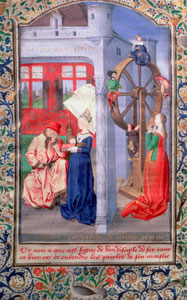
|
| | | |
|
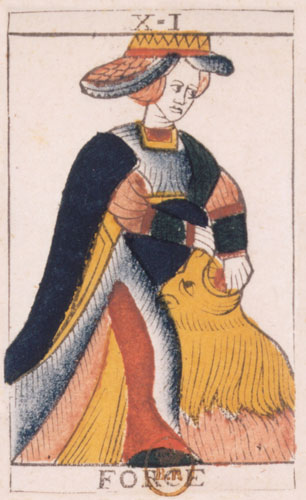 |
11th



Kaf
20/500
|
|
XI - Fortitude
Fortitude, with remnants from Samson, the latter taking the honey from the mouth of the Lion.
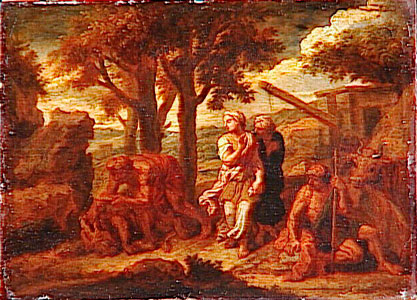
|
| | | |
|
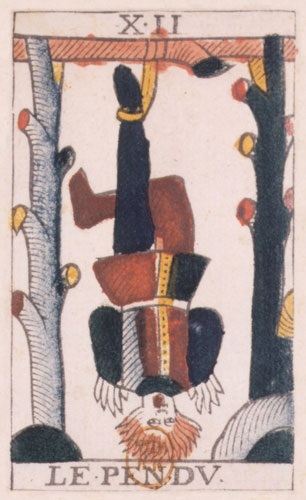 |
12th


Lamed
30
|
|
XII - Le Pendu
Torture and death of a Jew. Humanity's brutality to fellow human beings (and the animal realm) takes numerous forms, yet none so brutal and inhumane, it seems, as when focussed on casting fellow human beings as minority scape-goats, whether to account for bringing the Black Plague, or the dire economic circumstances faced in early 20th century Europe.
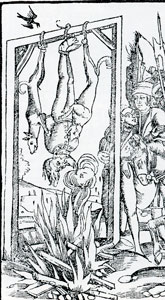
|
| | | |
|
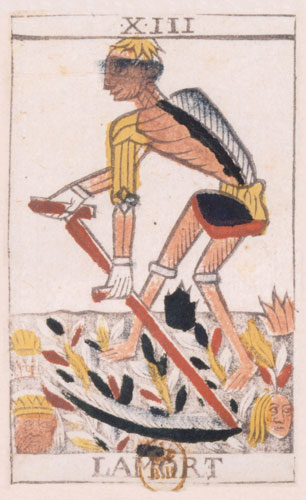 |
13th



Mem
40/600
|
|
XIII - Death
Reaping of the fruits of life, there are not too many depictions of skeletal deaths with scythe from the period - even in the numerous Dance Macabre (that, admittedly, does at times include one of the numerous skeletal figures with scythe). Below is an extract from Brueghel the Elder (1562), and a far more common representation of seasonal work found in numerous places, including 13th century Cathredral petroglyphs and Books of Hours.
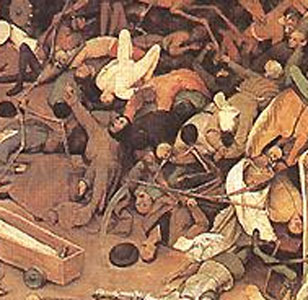 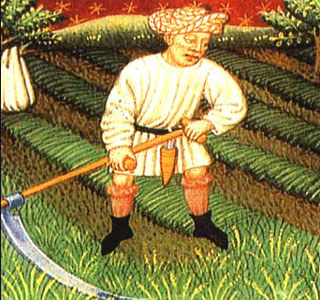
|
| | | |
|
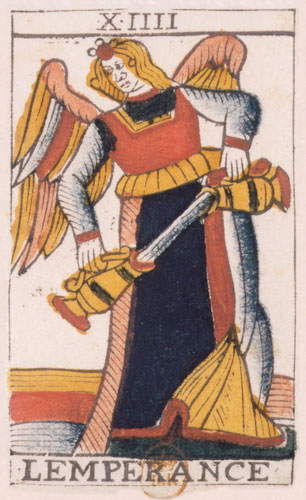 |
14th



Nun
50/700
|
|
XIIII - Temperance
Water and Wine, ∴ 'Water' and 'Fire', Temperance remains one of the cardinal virtues of self-restraint, often depicted with bridle(s).
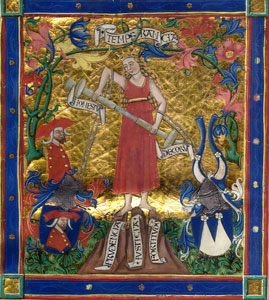
|
| | | |
|
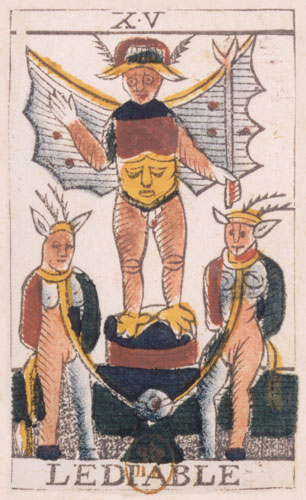 |
15th


Samek
60
|
|
XV - Devil
Much of this image calls to mind Hephæstius, together with his two created automata. Yet other aspects combine iconographic representations of Lucifer (with wings and claws) and Satan (or Ahriman) with dual face, the second on his belly.
Below are Lucifer sitting atop the Gates of Hell (Sorat), with Satan (Ahriman) directing people into its jaws.
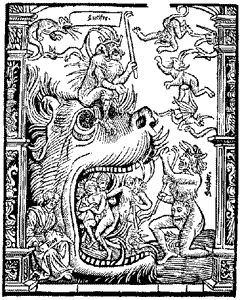
|
| | | |
|
 |
16th


Ayin
70
|
|
XVI - La Maison Dieu
Taken from the Infancy Gospel of pseudo-Matthew, who writes: "when the most blessed Mary, with her child, had entered the temple [in Hermopolis, Egypt], all the [365] idols were thrown to the ground, so they all lay flat,, convulsed and with their faces shattered. Thus they revealed that they were nothing. That that which was said by the prophet Isaiah was fulfilled: ‘Behold, the Lord shall come on a swift cloud and enter Egypt, and all the idols made by the Egyptians shall be moved from his face’."
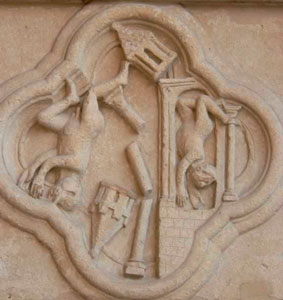
|
| | | |
|
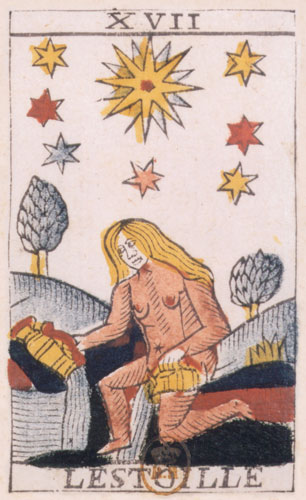 |
17th



Peh
80/800
|
|
XVII the Star
Originally a representation of Aquarius, the figure progressively altered to a feminine form, bringing to mind various Egyptian connections: Hapi, the breasted male Nile God, and the annual flooding of the Nile and Sirius and the Pleides. As Gynamedes-Aquarius, the gender appears again ambiguous.
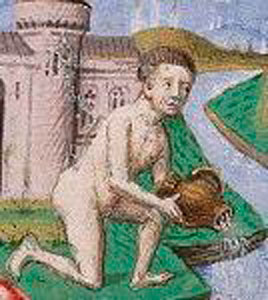 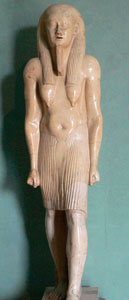
|
| | | |
|
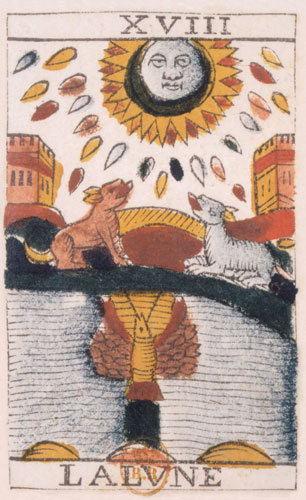 |
18th



Tzadi
90/900
|
|
XVIII - the Moon
Cancer in its essential characteristics... yet an image so rich in its composition. Below is an alchemical emblem from the frontispice of the Triomphe hermétique of Limojon de saint Didier.
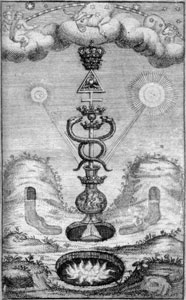
|
| | | |
|
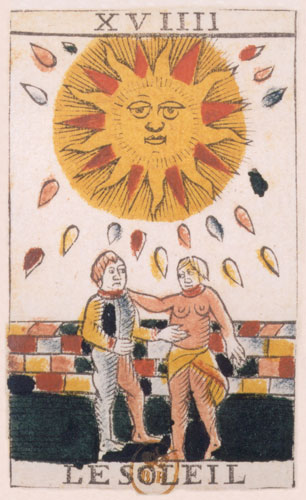 |
19th


Kof
100
|
|
XVIIII - the Sun
At one level, the Sun over Gemini - yet clearly referencing the Paradisiacal Garden of Eden and, by association, the Golden Age.
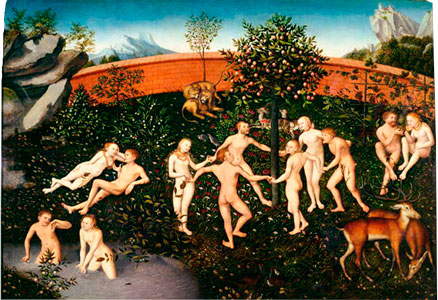
|
| | | |
|
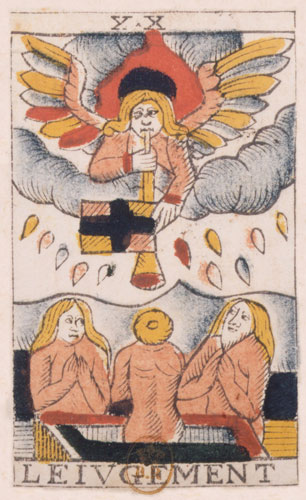 |
20th


Resh
200
|
|
XX - Judgement
Final or Last Judgement
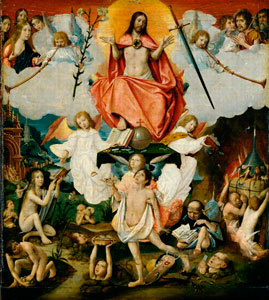
|
| | | |
|
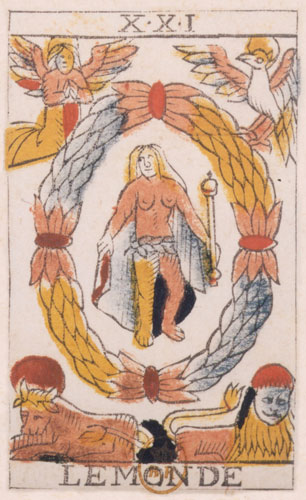 |
21st


Shin
300
|
|
XXI - Le Monde
Christ in Glory, descending at the second coming, calling to mind the manner in which he was described as God incarnating within the world, the four Evangelists in their 'natural' astrological order, adding to twenty-six, the value of YHVH. With Shin therein, transforming His unspeakable name to YHShVH: Yeheshuah.
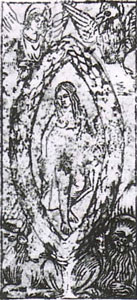
|
| | | |
|
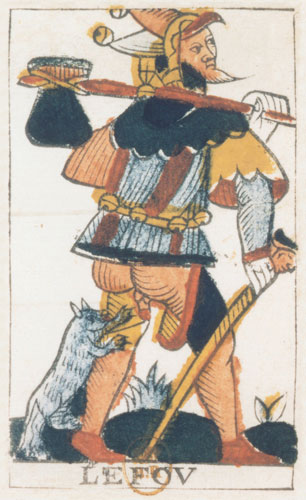 |
22nd


Tav
400
|
|
Fou (Mat)
The Feaste of Fools sends its crowned Fou on an improbable journey or errand.
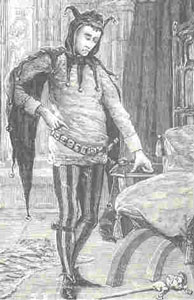
|
|

